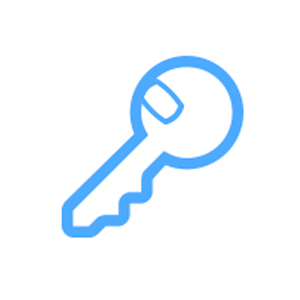Current Situation
Understanding the Global Markets
Understanding the Global Markets
Understanding the Global Markets
There are many blockchain exchanges around the world which all share a common root in providing an online trading environment in one or more tokens, aimed at retail investors and speculators. They began as trading venues where customers can exchange one coin for another and possibly for fiat cash, although this is a rarer facility.
These exchanges concentrate on providing an environment which is familiar and trusted for its retail participants. Thus, they concentrate on making their trading websites accessible and attractive whilst emphasizing how secure and trustworthy they are. Unfortunately, there have been all too many examples of problems with these exchanges, ranging from major hacks to spurious transactions. There are many complaints about how slow the transactions are to write back to chain and how the volumes and liquidity are limited.

The variable and potentially long time it takes to write trades back to the coin’s blockchain adds risk and unacceptable delay

The settlement risk where KYC is variable and there exists the risk of accepting funds with no AML provenance

The institutional risk of the exchange itself which is often small, newly formed and with limited capital reserves.
Every exchange, has Its own AML/KYC policy. When the token gets traded, swapped, and or transferred into new exchanges, the strength of the AML and KYC is reduced.
This is due to there being no standard global format that all exchanges adhere to. In the case of ”Dark Pools,” additional risk to the token issuer and the underlying assets of the token is exposed, as who as bough and sold the token is unknow to the exchange and its regulators.
The Minexchain model, has professional insured custodians, holding the underlying assets, and allow the token, acting as key to access these assets.
The benefits of this model are:
1. Segregation of the fractional ownership, which encapsulates the owner’s liability within itself.
2. This Model also allow investor to have a hybrid design, in which token ownership can be converted into real ownership of assets shares, if need be, to meet the regulators and judications needs of the investors.
Minexchain will perform KYC and AML on all individuals, corporates and institutions that wish to invest or trade on the Minexchain market. The level of checks performed will meet the regulatory requirements of the government of Abu Dhabi. Thus, the identity of anyone who purchases Minexchain tokens will be known to the Minexchain Registrar. This is a necessary requirement so that all token holders can be contacted, for example, in the event of a corporate action. If, for example a dividend is to be issued to all token holders then the identity of all token holders must be known to the Registrar so that funds can be distributed to them in proportion to the number of tokens held.
It may be that the Minexchain token holder gifts or sells their holding off-market to another person. There may even be a chain of sales. However, none of the sales or transfers, will be valid and confirmed, until they are registered by the Minexchain market and registrar. Until then, the original owner will be deemed still to own the Minexchain tokens and will be the beneficiary of any dividends etc.. All of the purchasers in the chain will have to be registered on the Minexchain market and thus, their identity will be known to the Minexchain registrar.
Because the Minexchain registrar is aware of the identity of all current and previous Minexchain token holders, the asset owner is always certain that their asset owner registry is up-to-date.
In general, if a token, is traded in multiple public blockchain exchanges or direct peer to peer transfers, it is very easy to make a “Copy Cat Token” that has false representation of the same underlying asset, and the retail public investor, will have no easy way to verify that this is a “Copy Cat Token” and not the real one.
Minexchain tokens cannot be traded on other exchanges and trades in these tokens are only valid if registered at/by Minexchain. Thus, whenever any external trade is notified to Minexchain the seller and the purchaser can be checked. If the seller is selling tokens that are registered as owned by another or is selling unregistered tokens, then a fraud can be identified.
Minexchain is responsible, supervised by the regulators of the government of Abu Dhabi, for the audit and verification of the tokens that it issues. For this reason, to protect its reputation and the market model it has established, Minexchain is very careful about registering any trades that occur off-market.
Most of the large global exchanges have an onboarding and listing fee structure which is disadvantageous to retail investors. Minexchain by comparison is focused on a volumetric model, which give the retail investor//traders the benefits of institutional pricing and fees.
This Platform will address all of the points with its new design principles and technologies, so that both the investor and issuer of the token are protected and safe
This Platform will also address “Copy Cat Tokens” and provide a cost effective and time efficient process to onboard new assets and tokens